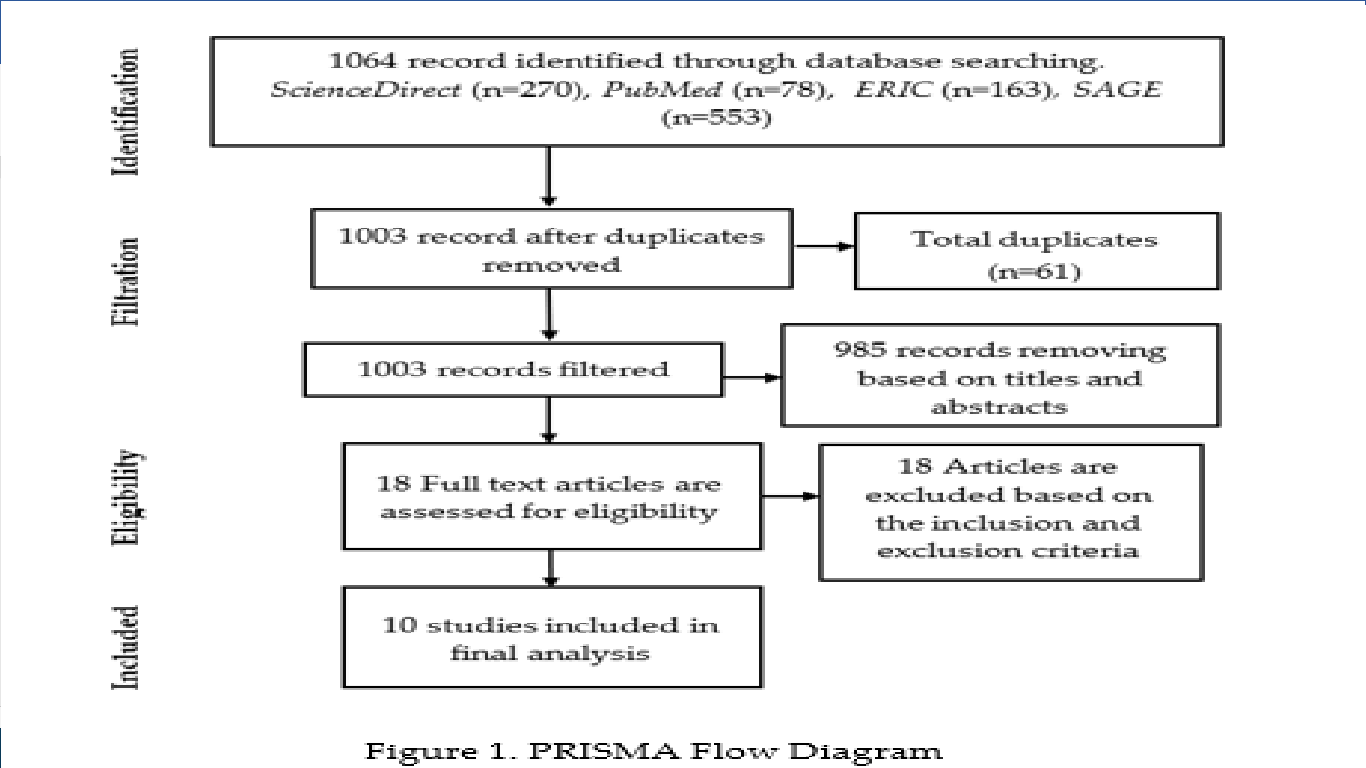The Community Preparedness Education and Training Program in Facing Earthquake Disasters: literatur review
DOI:
https://doi.org/10.23917/bik.v16i2.2174Keywords:
disaster, disaster management, disaster nurse, nursing disasterAbstract
Disasters due to earthquake natural events can have an impact on the community so that people who live in disaster-prone areas are the most disadvantaged parties. The community as a disadvantaged party must be equipped with disaster preparedness, one of which is a disaster risk reduction program. The purpose of this scooping review is to determine the description of the implementation of the earthquake disaster preparedness education and training program in the community. This research is a scooping review using Prisma flow chart in its implementation. The results of this study showed significant results in all articles (n=10) in improving community preparedness in earthquake disaster risk reduction. The methods used were the latest methods (virtual reality, animated videos, and games) and manual methods (lectures, discussions, and reading) with material on disaster concepts, management, and first aid. This research concludes that the role of the community and the importance of disaster preparedness education for the community is very important to be provided by conducting the latest or modern methods for more effective results.
Downloads
References
Alexander, D. What can we do about earthquakes? Bull. N. Z. Soc. Earthq. Eng. 2012, 45, 49–60. https://doi.org/10.5459/bnzsee.45.2.49-60
Amini, R., Biglari, F., Khodaveisi, M., & Tapak, L. (2021). Effect of education based on the health belief model on earthquake preparedness in women. International Journal of Disaster Risk Reduction, 52(September), 101954. https://doi.org/10.1016/j.ijdrr.2020.101954
Arulmohi, M., Vinayagamoorthy, V., & R., D. A. (2017). Physical Violence Against Doctors: A Content Analysis from Online Indian Newspapers. Indian Journal of Community Medicine, 42(1), 147–150. https://doi.org/10.4103/ijcm.IJCM
Beigi, P.; Rajabi, M.S.; Aghakhani, S. An Overview of Drone Energy Consumption Factors and Models. arXiv 2022, arXiv:2206.10775. https://doi.org/10.1007/978-3-030-72322-4_200-1
Bernardini, G.; D’Orazio, M.; Quagliarini, E. Towards a “behavioural design” approach for seismic risk reduction strategies of buildings and their environment. Saf. Sci. 2016, 86, 273–294. https://doi.org/10.1016/j.ssci.2016.03.010
Bhandari, A. K. C., Rahman, M., & Takahashi, O. (2023). Enhancing earthquake preparedness knowledge and practice among Nepalese immigrants residing in Japan. Scientific Reports, 13(1), 4468. https://doi.org/10.1038/s41598-023-31729-y
Chittaro, L.; Ranon, R. Serious Games for Training Occupants of a Building in Personal Fire Safety Skills. In Proceedings of the 2009 Conference in Games and Virtual Worlds for Serious Applications, Coventry, UK, 23–24 March 2009; pp. 76–83. https://doi.org/10.1109/VS-GAMES.2009.8
Ericsson, K.A.; Simon, H.A. Protocol Analysis: Verbal Reports as Data; MIT Press: Cambridge, MA, USA, 1984; Volume 426.
Feng, Z., González, V. A., Amor, R., Spearpoint, M., Thomas, J., Sacks, R., Lovreglio, R., & Cabrera-Guerrero, G. (2020). An immersive virtual reality serious game to enhance earthquake behavioral responses and post-earthquake evacuation preparedness in buildings. Advanced Engineering Informatics, 45(May), 101118. https://doi.org/10.1016/j.aei.2020.101118
Gabriela Perez-Fuentes, H.J. An intervention to increase earthquake and fre preparedness. in 4th International Conference on Disaster Management and Human Health: Reducing Risk, Improving Outcomes; Istanbul, Turkey. 1183–1194 (2015). https://doi.org/10.2495/SD151022
Gampell, A. V., Gaillard, J. C., Parsons, M., & Le Dé, L. (2021). Exploring the use of the Quake Safe House video game to foster disaster and disaster risk reduction awareness in museum visitors. International Journal of Disaster Risk Reduction, 52(May 2020), 101934. https://doi.org/10.1016/j.ijdrr.2020.101934
Gesser-Edelsburg, A., Zemach, M., Cohen, R., Miron-Shatz, T., Negev, M., & Mesch, G. S. (2021). The influence of new information that contradicts common knowledge about earthquake preparedness in Israel: A mixed methods experiment study. PLoS ONE, 16(4 April), 1–18. https://doi.org/10.1371/journal.pone.0250127
Greer, A. Earthquake preparedness and response: Comparison of the United States and Japan. Leadersh. Manag. Eng. 12(3), 111–125 (2012). https://doi.org/10.1061/(ASCE)LM.1943-5630.0000179
Ham, J.; Cho, D.; Oh, J.; Lee, B. Discrimination of multiple stress levels in virtual reality environments using heart rate variability. In Proceedings of the 2017 39th Annual International Conference of the IEEE Engineering in Medicine and Biology Society (EMBC), Jeju Island, Korea, 11–15 July 2017; pp. 3989–3992. https://doi.org/10.1109/EMBC.2017.8037730
Jouhari, Z., Pirasteh, A., Ghassemi, G. R., & Bazrafkan, L. (2015). The effects of educational program on health volunteers’ knowledge regarding their approach to earthquake in health centers in Tehran. Journal of Advances in Medical Education & Professionalism, 3(2), 56–61. http://www.ncbi.nlm.nih.gov/pubmed/25927068%0Ahttp://www.pubmedcentral.nih.gov/articlerender.fcgi?artid=PMC4403565
Ku, L. & Matani, S. Lef out: Immigrants’ access to health care and insurance. Health Af. (Millwood). 20(1), 247–256 (2001). https://doi.org/10.1377/hlthaff.20.1.247
L. Chittaro, F. Buttussi, Assessing knowledge retention of an immersive serious game vs. a traditional education method in aviation safety, TVCG 21 (4) (2015) 529–538. https://doi.org/10.1109/TVCG.2015.2391853
L. Chittaro, R. Sioni, Serious games for emergency preparedness: Evaluation of an interactive vs. a non-interactive simulation of a terror attack, Comput. Hum. Behav. 50 (2015) 508–519. https://doi.org/10.1016/j.chb.2015.03.074
Li, C., Liang, W., Quigley, C., Zhao, Y., & Yu, L. F. (2017). Earthquake Safety Training through Virtual Drills. IEEE Transactions on Visualization and Computer Graphics, 23(4), 1275–1284. https://doi.org/10.1109/TVCG.2017.2656958
Lindell, M. K. & Perry, R. W. Te protective action decision model: Teoretical modifcations and additional evidence. Risk Anal. 32(4), 616–632 (2012). https://doi.org/10.1111/j.1539-6924.2011.01647.x
Lotfi, R.; Kargar, B.; Gharehbaghi, A.; Afshar, M.; Rajabi, M.S.; Mardani, N. A data-driven robust optimization for multi-objective renewable energy location by considering risk. Environ. Dev. Sustain. 2022. https://doi.org/10.1007/s10668-022-02448-7
M. Ramirez, K. Kubicek, C. Peek-Asa, and M. Wong. Accountability and assessment of emergency drill performance at schools. Family and Community Health, 32(2), 2009. https://doi.org/10.1097/FCH.0b013e3181994662
Mudiyanselage, S.E.; Nguyen, P.H.D.; Rajabi, M.S.; Akhavian, R. Automated Workers’ Ergonomic Risk Assessment in Manual Material Handling Using sEMG Wearable Sensors and Machine Learning. Electronics 2021, 10, 2558. https://doi.org/10.3390/electronics10202558
Moeinifard, P.; Rajabi, M.S.; Bitaraf, M. Lost Vibration Test Data Recovery Using Convolutional Neural Network: A Case Study. arXiv 2022, arXiv:2204.05440.
Ott, M.; Freina, L. A literature review on immersive virtual reality in education: State of the art and perspectives. In Proceedings of the International Scientific Conference Elearning and Software for Education, Bucharest, Romania, 23–24 April 2015. https://doi.org/10.12753/2066-026X-15-020
Rajabi, M.S.; Beigi, P.; Aghakhani, S. Drone Delivery Systems and Energy Management: A Review and Future Trends. arXiv 2022, arXiv:2206.10765. https://doi.org/10.3390/buildings12111850
Rajabi, M.S.; Radzi, A.R.; Rezaeiashtiani, M.; Famili, A.; Rashidi, M.E.; Rahman, R.A. Key Assessment Criteria for Organizational BIM Capabilities: A Cross-Regional Study. Buildings 2022, 12, 1013.
Rajabi, M. S., Taghaddos, H., & Zahrai, S. M. (2022). Improving Emergency Training for Earthquakes through Immersive Virtual Environments and Anxiety Tests: A Case Study. Buildings, 12(11). https://doi.org/10.3390/buildings12111850
Ryan, B., Johnston, K. A., Taylor, M. & McAndrew, R. Community engagement for disaster preparedness: A systematic literature review. Int. J. Disaster Risk Reduct. 49, 101655 (2020). https://doi.org/10.1016/j.ijdrr.2020.101655
Schwebel, D.C.; Combs, T.; Rodriguez, D.; Severson, J.; Sisiopiku, V. Community-based pedestrian safety training in virtual reality: A pragmatic trial. Accid. Anal. Prev. 2016, 86, 9–15. https://doi.org/10.1016/j.aap.2015.10.002
Shakerian, M.; Rajabi, M.S.; Tajik, M.; Taghaddos, H. Hybrid Simulation-based Resource Planning and Constructability Analysis of RCC Pavement Projects. arXiv 2022, arXiv:220405659.
Shaw, R., Shiwaku Hirohide Kobayashi, K. & Kobayashi, M. Linking experience, education, perception and earthquake preparedness. Disaster Prevent. Manag. Int. J. 13(1), 39–49 (2004). https://doi.org/10.1108/09653560410521689
Toyoda, Y. (2020). A Framework of Simulation and Gaming for Enhancing Community Resilience Against Large-Scale Earthquakes: Application for Achievements in Japan. Simulation and Gaming, 51(2), 180–211. https://doi.org/10.1177/1046878119899424

Downloads
Submitted
Accepted
Published
How to Cite
Issue
Section
License
Copyright (c) 2023 Pusparini Anggita Ayuningtyas, Sri Setiyarini, Syahirul Alim

This work is licensed under a Creative Commons Attribution 4.0 International License.


















